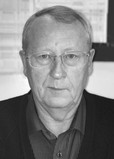Fitness technologies to build students' motor competency
Фотографии:
ˑ:
PhD, Associate Professor V.S. Astafyev1
I.V. Rudyakova1
PhD, Associate Professor V.V. Borisov1
1Transbaikal State University, Chita
2St. Petersburg Humanitarian University of Trade Unions, St. Petersburg
Among the array of means of academic physical education, it is fitness technologies with the gymnastics orientation that are the most affordable and effective. It should be noted that the students’ attitude to various health-improvement fitness technologies is characterized by positive motivation; the interest in them is growing significantly due to the modification of exercises and routines, the possibility to change their intensity and orientation.
Objective of the present study was to theoretically substantiate the educational model for implementation of the program-methodical support for building the motor competency in the students, including the comprehensive use of several fitness technologies with gymnastic orientation: step aerobics, fitball aerobics and stretching. This combination is necessary to ensure the uniform distribution of physical loads on the main muscle groups, as well as to increase the emotionality in the training process and promote interest in training.
The educational experiment revealed a positive dynamics in the indicators of physical and functional fitness of the female students participating in the experiment, which characterizes the level of formation of motor competency.
Keywords: fitness technology, formation, motor competency, health, load, physical education.
References
- Zhernosek A.M. Tekhnologiya regulirovaniya intensivnosti zanyatiy ozdorovitelnoy step-aerobikoy [Technology of regulating intensity of step aerobics classes]. Vestnik sportivnoy nauki. M: VNIIFK publ.. 2006.no. 4. pp. 37-39.
- Zaitseva G.A. Ozdorovitelnaya aerobika v vysshikh uchebnykh zavedeniyakh [Fitness aerobics in higher education]. M.: Fizkultura i sport publ., 2007. 104 p.
- Ivanenko O.A. Kompleksnaya metodika zanyatiy po ozdorovitelnoy aerobike s zhenshchinami molodogo vozrasta [Comprehensive methodology for fitness aerobics classes with young women]. PhD diss. abstr. Chelyabinsk: UralSAPC, 2002. 24 p
- Ishanova O.V. Optimizatsiya nagruzki pri ozdorovitelnykh zanyatiyakh aerobikoy [Load optimization during fitness aerobics classes]. Teoriya i praktika fiz. kultury. 2007. no. 8. p. 69.
- Kirichenko S.N. Ozdorovitelnaya aerobika. 10-11-e klassy: programma, planirovanie, razrabotki zanyatiy [Fitness aerobics. Grades 10-11: program, planning, class development]. Volgograd: Uchitel publ., 2011. 95 p.
- Kim N. Fitnes [Fitness]. Textbook. M.: Sovetskiy sport publ., 2006. 453 p.
- Lisitskaya T.S. Aerobika. Teoriya i metodika [Aerobics. Theory and Methods]. M.: RFA publ., 2002. 232 p.
- Razmahova S.Yu. Aerobika: teoriya, metodika, praktika zanyatiy v vuze [Aerobics: theory, methodology, practice at university]. Study guide. M.: Rudi publ. 2011. 175 p.



 Журнал "THEORY AND PRACTICE
Журнал "THEORY AND PRACTICE